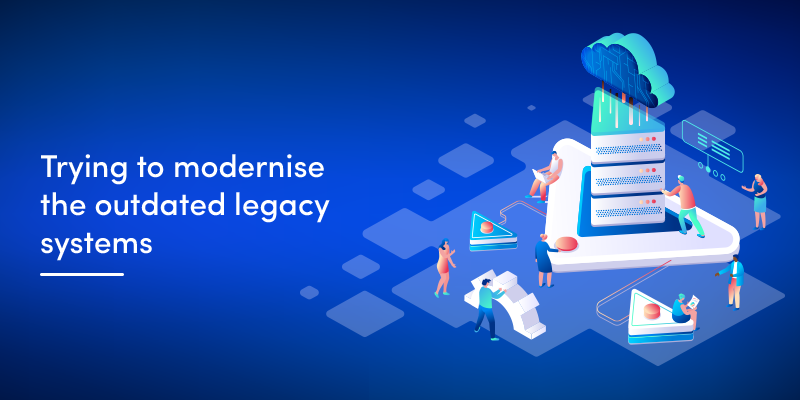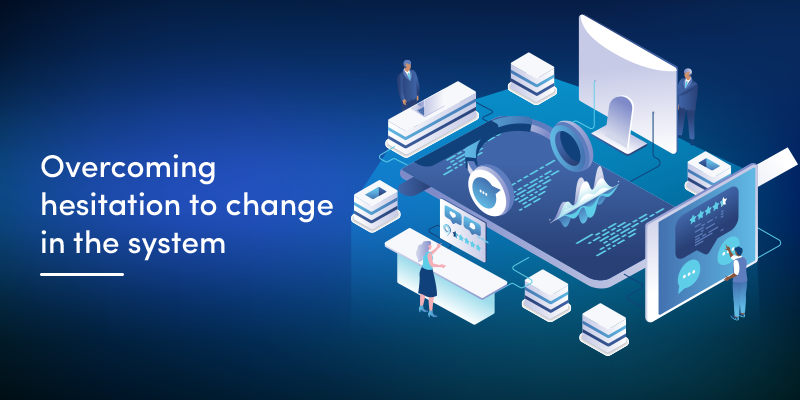International research by American management consulting company - McKinsey & Company indicates that ‘the success rate for Digital Transformation Programmes is lower compared to other transformations.
So, the biggest question is - how can the executives & project leaders ensure that the Digital Transformation is successfully implemented? Well, in this article we will discuss the ways to overcome the Digital Transformation obstacles. Experts from a Milton Keynes - UK based digital consultancy have outlined six ways of overcoming common Digital Transformation obstacles.
How to overcome obstacles to Digital Transformation?
Here are the six simple ways in which your organization can implement Digital Transformation effectively…
Keeping up to date with the latest innovations

In this digital age, technology is evolving so fast that it becomes very difficult for many organisations to keep up. Investing in technology requires a regular and consistent review of the existing capabilities of an organization, the direction in which the technology is going, and a clear assessment if your business can follow that or not.
For example, the cloud can play a very fundamental role in Digital Transformation of an organisation, as it can grow and develop with time and can assist an organization in meeting the ever-changing demands of customers. The cloud can be particularly advantageous while managing corporate growth, compliance requirements and it can also support businesses with regulatory requirements such as the implementation of GDPR.
Having a clear outlook of the customers’ needs

When it comes to Digital Transformation, having a comprehensive understanding of the customers’ expectations and requirements becomes a vital part in the planning process. Customers’ expectations are exceptionally high in today’s technology driven world and businesses are expected to have a strong online presence. Organizations need to develop the ability to communicate with their customers and answer questions spontaneously through multiple online platforms.
Many companies which have undergone a successful Digital Transformation, developed a comprehensive plan to meet their customers’ digital needs and with the help of the cloud, they could develop their systems & processes at the same pace as the customers’ changing mindset.
Trying to modernise the outdated legacy systems

The organizations which are trying to stick to the outdated technologies and build flexible & agile digital systems on top of that outdated technology, are creating more serious issues for themselves, whilst spending lots of money. If the core systems for an organization were designed more than five years ago, to support a successful digital transformation, they’ll need a little bit of rework.
Using the cloud to support your systems will mean that your business has the ability to be flexible and agile; and eventually you can implement digital transformation successfully.
Overcoming hesitation to change in the system

Most of the times, changes face resistance as they are difficult to accept for the people, who have understood and adapted to the processes for a long time. The biggest pushback that an organization may face is usually from their own employees, who may reject the need for change that Digital Transformation shall bring in.
So, in order to gain support from the team, it is important for an organization to communicate with them and keep them informed about the changes that are expected to happen – right from the planning to execution. Giving them a full understanding of the changes about to happen within the organisation, will help in reducing the hesitation and resistance.
Getting your human capital involved in the process

Getting your employees involved in the entire process and encouraging them to get on board with Digital Transformation, is the key to success. Here are ways that can help ramping up employee engagement…
Communicate the plan to the team
Communicating the Digital Transformation plan to the employees and being transparent about how the systems might change, creates a foundation for acceptance. It is also important to let the team know about the reasons for deciding to go for Digital Transformation. At the same time, maintaining continuity in such communication throughout the digital transformation process, will engage your team; they will feel involved and understand what is happening, especially when these changes directly affect how they work.
Explain how changes will benefit them
Your team may be wondering what is wrong with the current systems you have, people like things they know and are comfortable with and therefore might feel apprehensive about the changes new systems will bring. It is your job to be clear about the planned changes and educate your employees with how it will benefit the team and make their life and role in the company easier.
Let the employees express their concerns
Letting your employees express their concerns and answering their questions, will reassure them that the changes will be good for them and for the organization as well. Being open with your team about each stage of the Digital Transformation process, will help them absorb the change and identify their own ways to adapt to them. It will also provide an opportunity to give feedback and opinions which might prove a very valuable input in the long run.
Invest in training sessions and activities
Training is the key to a successful Digital Transformation! Ensuring that all the employees have fully understood the new processes and they are trained for the new system prior to rolling out, is very important. This will also assist the workforce in maintaining productivity and ensuring that nothing is missed during the switchover from old systems to new systems.
Planning continuous learning & engagement

Digital transformation may take years to be completely implemented in an organisation. Especially, if it is a pan-organization transformation. Keeping employees engaged in such a long-term project can be difficult. Moreover, maintaining continuity in the learning process becomes difficult over the time. Therefore, it is important for CIOs to be open about the plans for the future stages of Digital Transformation. This encourages the workforce to adopt the changes which are being implemented and garner their support for this long-term change.
Conclusion:
Digital Transformation is not a fancy concept or some sort of show-off! It is the need of the hour because if you don’t have a plan to deal with the existing and upcoming technologies while others do, it is going to cost you a lot more than you think. In today’s tech driven world, if a company gets trapped in a downward spiral, no one can stop its decline. If you think your organization also needs to be up-to-date with the technology of the future, contact IConflux. Visit or send an email to info@iconflux.com.




